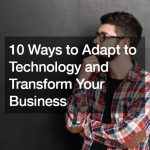Whether you’re processing raw materials for consumption or preservation to meet a longer shelf-life, the most important factor in the whole food processing system is safety. From the condition of the environment, the types of materials used, the health of the people involved, the temperature of the area, and more, it is the responsibility of the manufacturer to ensure that all phases are carefully inspected and finished products are of high quality.
Using the appropriate equipment, such as no-BPA plastics, food grade oil pumps, stainless steel food-safe machines and containers, and durable and tightly sealed containers, is important. There are plenty of traditional methods designed to minimize safety risks, such as drying, pasteurization, freezing, or canning. The goal is to reduce or prevent the growth of bacteria as much as possible to keep food safe for consumption for a longer time.
If you are just starting out on the food processing business, there are five tried-and-tested methods to prevent food from spoiling quickly and to ensure that all products are safe to eat.
1. Preservation
Boiling or heating food is one of the quickest ways to eliminate microbes and other pathogens that might threaten the integrity of the product. If you’re cooking the food before setting it aside to pack, be sure that you use high-quality equipment to minimize exposure to bacteria. Where you transfer the food for preservation also matters and it’s best that containers are sanitized with food-grade solutions before use.
2. Freezing
One of the most common methods, freezing can be done on both domestic and commercial situations. Food can be kept at below zero degrees until you are ready to cook or consume them. Usually, food that’s frozen can last for months to years.
3. Drying

Drying is one of the oldest ways to preserve and process food. This method’s goal is to reduce the amount of water in the product, as this will curtail the growth of microbes. Food items such as oats, rice, wheat, rye, and other similar goods are preserved using this process.
4. Salting
Salting, like drying, also sucks the moisture out of food so that it stays edible for longer. The best types of food to be salted are meat products.
5. Vacuum packing
This method involves keeping the food in a vacuum, air-tight packaging so that it is not exposed to bacteria. Such type of environment closes oxygen off, which is what germs need to thrive. By keeping food in a vacuum-sealed pack, you can help extend its shelf life for weeks or months, depending on the product and its condition prior to sealing.
There are other types of food preservation processes, though they might affect how a product will taste. These include pickling or sugaring, which is appropriate only for sweetened items and not for those products that you want to taste as fresh as the day you made them. Modern technology has also introduced blast-freezing techniques, which instantly freezes items the moment they are placed in the machine so that when they are thawed out, their quality remains the same regardless if they have been in storage for months.




